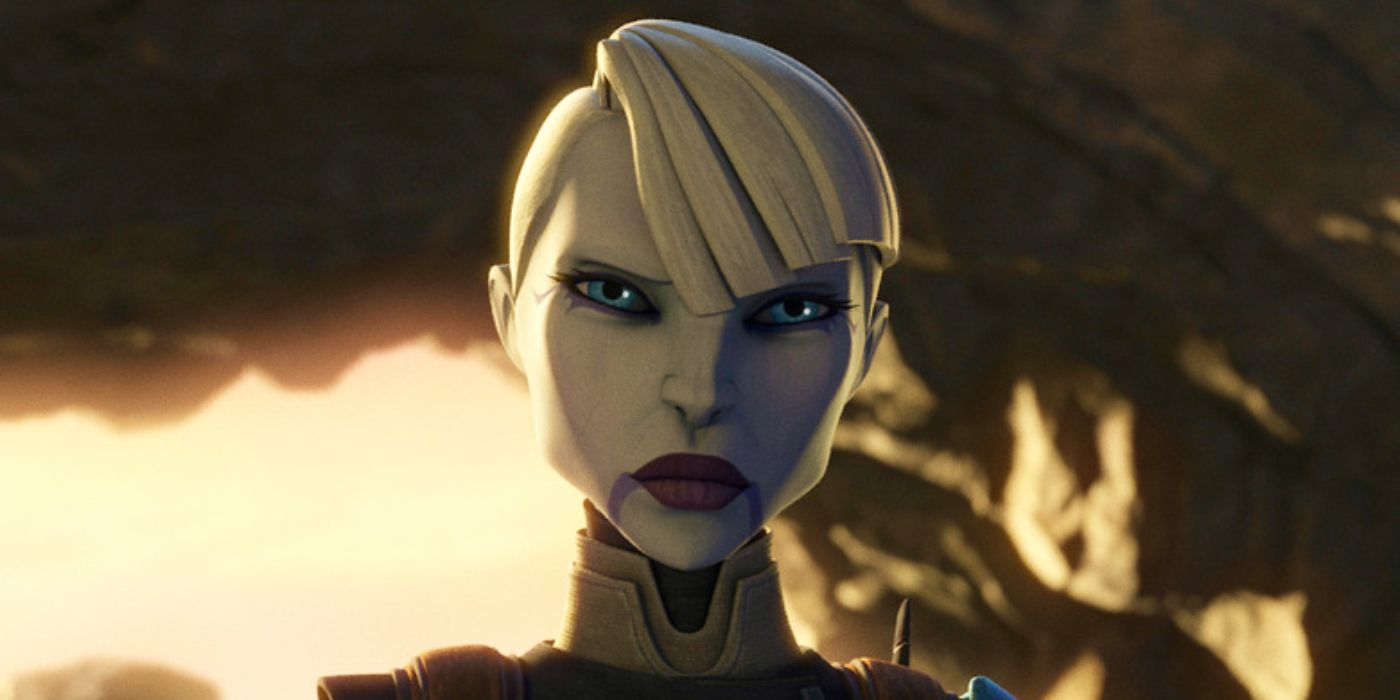Beneath the Bleak and Brutal Sun: Horror’s Best Desert Films
Deserts are inherently horrific. One of the most inhospitable places on earth, these wastelands are characterized by the lack of rainfall needed to support human life. Barren hills stretch out as far as the eye can see while dangerous animals wait for nightfall to come. The brutal sun bakes a hard and crumbling ground which […] The post Beneath the Bleak and Brutal Sun: Horror’s Best Desert Films appeared first on Bloody Disgusting!.

Deserts are inherently horrific. One of the most inhospitable places on earth, these wastelands are characterized by the lack of rainfall needed to support human life. Barren hills stretch out as far as the eye can see while dangerous animals wait for nightfall to come. The brutal sun bakes a hard and crumbling ground which offers little protective shade. Without adequate supplies or training, death is a near certainty. And that’s just the landscape.
Deserts are also filled with a variety of predators — from poisonous reptiles to sinister humans masquerading as innocent travelers. Joshua Erkman’s brutal A Desert features two such fiends who torment a photographer on a cross-country road trip. Exploiting the desert’s extreme isolation, they drag Harold (David Yow) into the depths of depravity, indulging in lawless possibilities.
This disturbing neo-noire is a particularly shocking entry in a brutal subgenre that follows a long history of horror films set in the vast emptiness of the open desert. Grab your canteen, lather on that sunscreen, and revisit these titles before you grab tickets and head out to see A Desert.
The Hills Have Eyes (1977)

Before Wes Craven became known for reinventing the slasher genre two times over, he created horror in a barren locale. The Hills Have Eyes follows a suburban family on a cross-country road trip who wind up taking a detour to hell. The Carters are enjoying the sights in a multi-generational caravan when they choose a more scenic route through the Mojave Desert. But spikes on the road leave their tires shredded and they become stranded miles away from help or shelter. Hidden among the picturesque cliffs are a family of inbred cannibals who survive by trapping and ambushing passing tourists. With their mobile home under siege, the Carters square off against Jupitor (James Whitworth) and his bloodthirsty kin in a brutal battle for survival. Based on the legendary Sawney Bean clan of 16th century Scotland, Craven also weaves in subtle commentary on class warfare and nuclear testing. Alexandre Aja’s 2006 remake leans into the carnage with updated gore and intimate recreations of the original’s most disturbing scenes. But nothing can compare to the bleak depravity of Craven’s sun-bleached desert nightmare.
Revenge (2017)

Coralie Fargeat’s debut film puts a modern spin on monsters who use the isolated landscape to their advantage. Jen (Matilda Lutz) is looking forward to a weekend away with her married boyfriend Richard (Kevin Janssens) when a surprise interrupts their romantic getaway. She’s just made herself at home on the luxurious desert compound when Richard’s inconsiderate friends crash the party for a hunting excursion in the surrounding desert. The next morning, one of these vile men rapes Jen while the other actively ignores the assault. When she reject’s Richard’s offer of repair—which upends her life to keep from inconveniencing his own—the three men chase her off a rocky cliff. But Jen is reborn in the desert and emerges from a dusty cave an avenging warrior hellbent on revenge. Fargeat’s film is not only a timely update of the rape-revenge subgenre, but an interesting turn on the desert horror film. After all, Richard and his friends aren’t the only ones who can commit atrocious acts in the isolated landscape.
Tremors (1990)

Not all desert horror is devastating and nihilistic. Ron Underwood’s sunny monster movie is a beloved creature feature and classic horror comedy. Val (Kevin Bacon) and Earl (Fred Ward) are transient handymen picking up odd jobs in Perfection, Nevada, a remote town whose population hovers near the single digits. When residents begin mysteriously dying, they suspect there may be a serial killer on the loose. But strange phenomena soon reveal a trio of monstrous worms lurking beneath the earth who track their prey through seismic vibrations. Like Steven Spielberg’s Jaws—on which the film’s iconic poster is based—Underwood keeps these predators hidden, slowly revealing various pieces of their deadly anatomy. With clever set pieces including a pole vault escape, rec room shootout, and attack through the floorboards of a general store, Underwood manages to make the open desert feel as dangerous as a rocky sea. Hideous monsters lurk beneath and one false step could lead to instant death.
The Bad Batch (2016)

While most desert horror films exploit the ecosystem’s natural danger, Ana Lily Amirpour’s The Bad Batch takes place in a hellscape engineered by the US government. Identified as an “undesirable,” Arlen (Suki Waterhouse) is sent to an enclosed desert outside of Texas where laws and citizenship no longer apply. Left to fend for herself, she’s soon abducted by a pair of cannibals who amputate and eat her leg and arm. Escaping this hellish meat farm, she eventually finds refuge in Comfort, a utopian community led by the Dream (Keanu Reeves). But when this cult-like leader’s sinister motivations come to light, Arlen abandons this illusion of safety to join one of the many cannibals patrolling the land. Amirpour’s film is an unflinching story of survival at all costs and a star-studded exploration of life on the fringes of society. While there are plenty of monsters lurking in this engineered desert, we’re asked to find humanity in seemingly dangerous criminals and question what kind of monster we would become if we found ourselves stuck in the same position.
Horror in the High Desert (2021)

If not for its evocative title, general audiences might not know Dutch Marich’s faux documentary is set in the desert at all. When extreme hiker Gary Hinge (Eric Mencis) fails to return from a multi-day trek deep into Nevada’s Great Basin Desert, his roommate and sister sound the alarm. The discovery of Gary’s abandoned truck leads a private investigator deeper into the remote terrain where he locates Gary’s severed hand. But following the hikers’ digital footprint reveals an even more horrific discovery. Recent posts on his popular video blog allude to a sinister presence in a cabin Gary discovered deep in the high desert. Attempting to retrace his steps, Gary comes face to face with a dangerous creature who’s made the remote desert his hidden home. Rather than sunny dunes and faded cliffs, this desert is cold and filled with prickly vegetation, providing plenty of places for danger to hide. Filmed during COVID lockdowns, the story plays with meta-textual isolation as no character appears on screen with anyone else. Though it may not look like a stereotypical desert, the film has a bereft and isolated quality that chills the viewer to the bone.
Wolf Creek (2005)

In 2005, Greg McLean released this brutal film and ignited a wave of bleak Australian horror. Wolf Creek follows a trio of backpackers traversing the Australian outback who become stranded at the titular landmark. At first Mick (John Jarratt) seems like the answer to their prayers when he offers to tow and repair their car, but Liz (Cassandra Magrath) and Kristy (Kestie Morassi) wake up to a nightmare when they’re taken hostage and tortured on the man’s remote compound. Miles into the desolate outback, not even escape guarantees survival. Liz and Kristy must not only break free of Mick’s clutches, but steal a car from his cluttered yard. Their companion Ben (Nathan Phillips) does manage to flee but nearly dies making his way to a road. Adding to the terror, the film’s dreaded, “head on a stick” sequence was based on a real series of sadistic murders in Australia’s remote Belanglo State Forest. McLean’s film shocked audiences with its gritty and unflinching cruelty while perfectly encapsulating the deadly isolation of this admittedly gorgeous natural terrain.
The Hitcher (1986)

Many desert films exploit isolation and see their heroes only survive by finding a car or securing help from passers by. But Robert Harmon’s 1986 classic reminds us that even locating a means of escape will not necessarily lead to safety. Jim Halsey (C. Thomas Howell) is delivering a car cross country when he makes the biggest mistake of his life. Hoping to stay awake on the monotonous journey, he picks up a hitchhiker known as John Ryder (Rutger Hauer). But its just moments after the man climbs inside that Jim realizes he’s picked up a dangerous criminal. He pushes the man out of his moving car and speeds away, believing he’s successfully escaped danger. But Ryder begins stalking Jim across the desert highways, always managing to stay one step ahead. This nihilistic story escalates into unthinkable violence as Ryder fixates his maniacal imagination on his increasingly desperate prey. Harmon’s film is an unrelenting nightmare proving that nowhere is safe in the open desert and even civilized outposts can be corrupted.
A Desert is now playing in limited markets and will expand nationwide this Friday. Get tickets now!

The post Beneath the Bleak and Brutal Sun: Horror’s Best Desert Films appeared first on Bloody Disgusting!.










































































